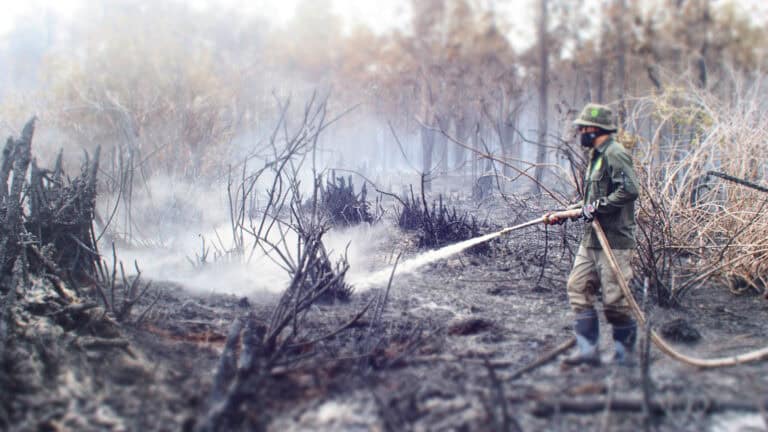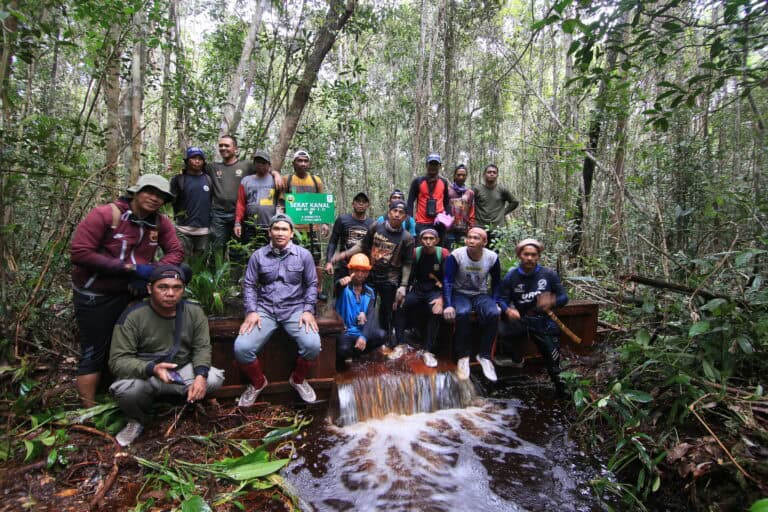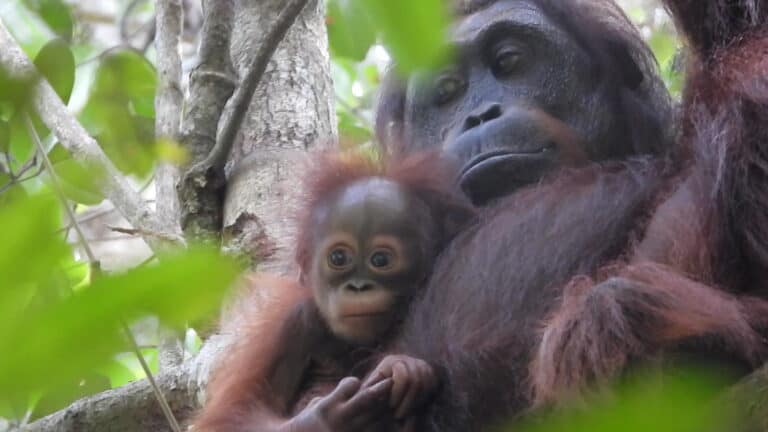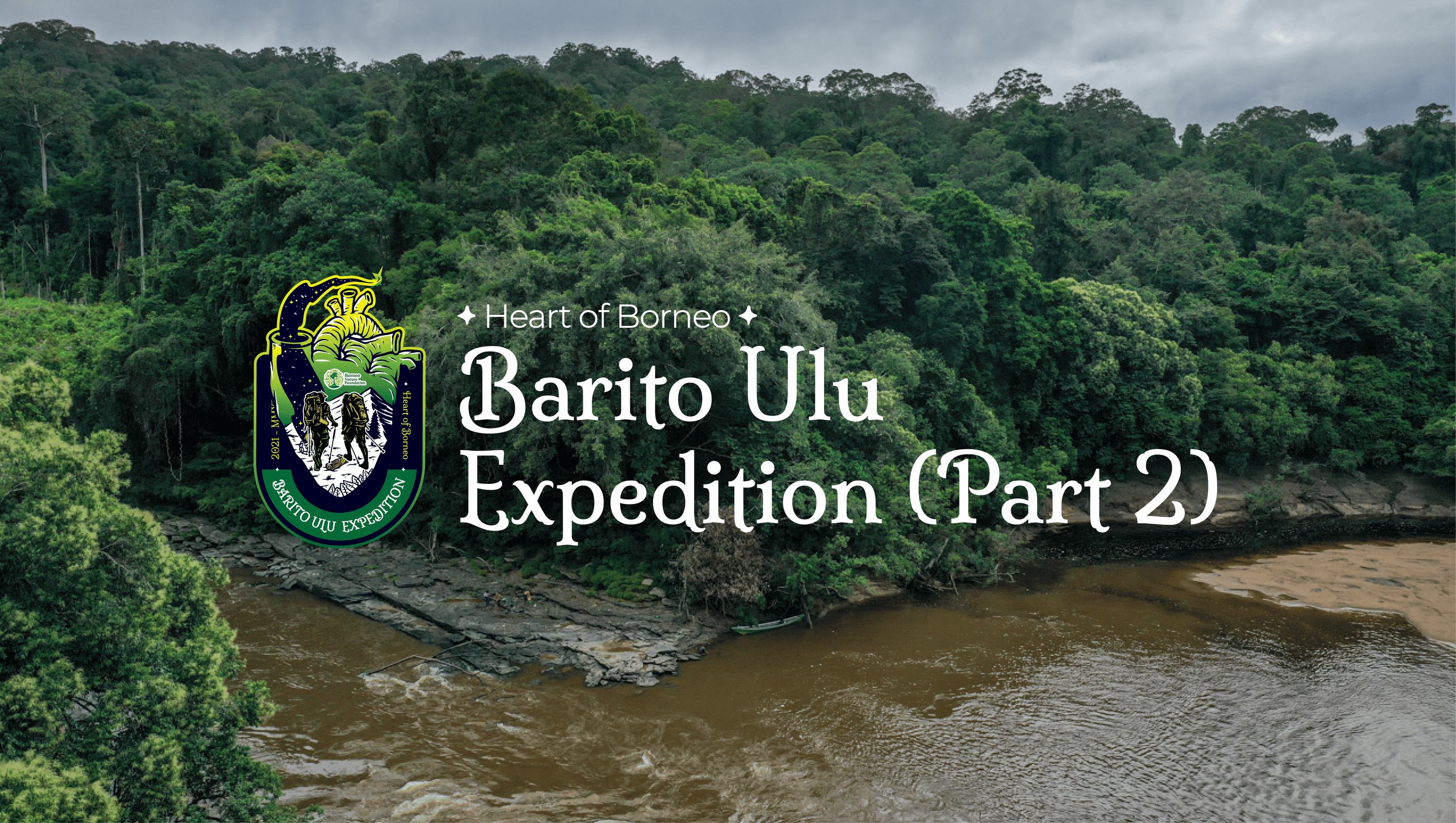Peat-swamp forests are moist tropical forests that, in their natural state, remain flooded year-round. This forest type is formed over thousands of years by the accumulation of organic matter (such as plant debris, animal carcasses, etc.) that does not fully decompose.
The accumulated mass of organic matter forms peat deposits up to 20 meters deep (Anderson, 1983). Previously, peat-swamp forests were considered “unproductive” due to the lack of mineral content in the soil.

Photo by Joey Markx
The Importance of Peat-swamp Forest
Like a giant sponge that holds moisture, peat swamp forests will eventually form a dome of wet organic matter (peat), hidden below ground. These peat deposits are now understood to be the world’s largest terrestrial carbon stores, as well as key natural important water tanks.
Ordinarily, peat swamp forests remain moist year-round and are thus resistant to fire. However, the peatland degradation over the last 20 years has left many of Borneo’s peat-swamp forests vulnerable to fires during the dry season, especially combined with El Niño weather events.
See also: Why are Peat-swamp Forests So Vulnerable to Fire?
Sebangau National Park
The Sebangau National Park, in southern Central Kalimantan (Indonesian Borneo), is the largest peat swamp forest ecosystem anywhere on the island. About 90% of its ±537,376-hectare area consists of peat-swamp forest overlying peat deposits of varying depths.
This national park has a very rich biodversity. A total of 9 species of primates inhabits the Sebangau National Park including the orangutan (Pongo pygmaeus wurmbii) with an estimated population of 6,080 individuals (Directorate General KSDAE 2019). This very high population status makes it a critical site for orangutan population conservation.
Read more: Sebangau National Park
Socio-economic Benefits
The Sebangau River’s high fishing potential provides socio-economic benefits for surrounding communities, and many people of living around the Sebangau National Park work as freshwater fishermen. Communities also benefit from the potential of ecotourism, including both domestic and foreign tourists.
Peat-swamp forests are not only an important habitat for biodiversity, but have majorly impacted many indigenous peoples’ way of life for generations. Globally, peat-swamp forests also play a vital role in climate change mitigation.
Long-term support for peat-swamp forest conservation is desperately needed. If you wish to support BNF’s conservation efforts together with our partners, please click here.
Written by Desi Natalia, Communications Manager













